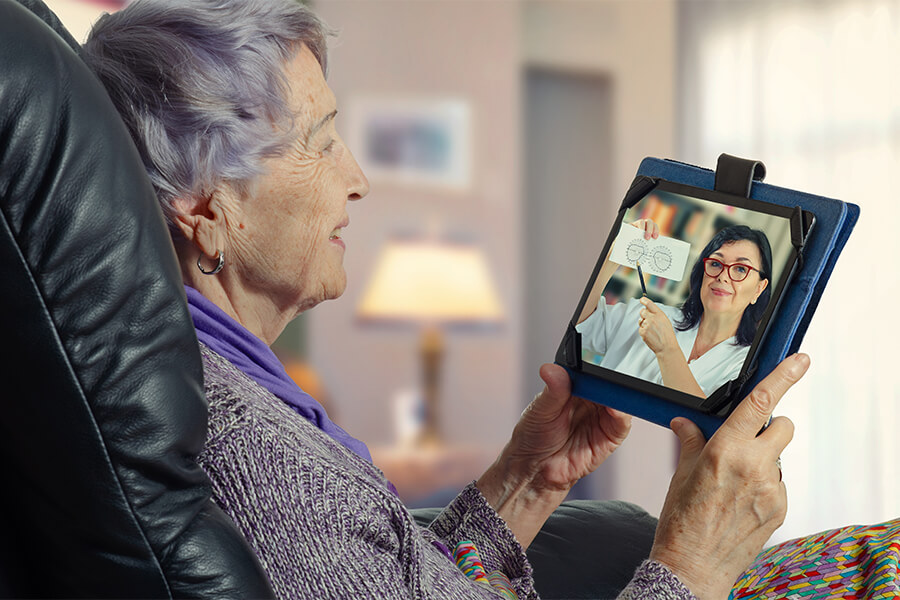 Older adults who are disabled and homebound are more likely than their peers to be socioeconomically disadvantaged and have depression. However, getting treatment for depression is a challenge for this population—not only because they are at home all the time, but also because there are not enough mental health workers who specialize in working with older adults. In a recent trial supported by NIMHD, researchers compared different types of remote mental health services for older, homebound adults with symptoms of depression. The study found that counselors with training at the bachelor’s degree level may play a role in improving the mental and social wellbeing of this population through videoconferencing.
Older adults who are disabled and homebound are more likely than their peers to be socioeconomically disadvantaged and have depression. However, getting treatment for depression is a challenge for this population—not only because they are at home all the time, but also because there are not enough mental health workers who specialize in working with older adults. In a recent trial supported by NIMHD, researchers compared different types of remote mental health services for older, homebound adults with symptoms of depression. The study found that counselors with training at the bachelor’s degree level may play a role in improving the mental and social wellbeing of this population through videoconferencing.
The NIMHD study was a clinical trial that randomized 277 participants into three treatment groups: videoconferenced behavioral activation (tele-BA) therapy delivered by bachelor’s-level counselors, teleconferenced problem-solving therapy (tele-PST) delivered by master’s-level clinicians, and telephone support calls by research assistants. A previous study, published in 2014, showed that brief, videoconferenced tele-PST provided by licensed clinicians worked well for older, low-income adults who were homebound and depressed; the new study looked at whether tele-BA with counselors who had less training would work as well.
All participants were at least 50 years old, homebound, and low-income and had depressive symptoms measured with a score of at least 15 on the Hamilton Depression Rating Scale (HAMD), suggesting mild depression. Tele-BA and tele-PST participants received five weekly treatment sessions. Tele-BA therapy consisted of learning five steps for reinforcing healthy behaviors to improve one’s mood, mobility, and social engagement. Tele-PST involved a seven-step approach for problem-solving coping skills.
The researchers measured the change in the 24-item HAMD score for each patient to determine how well the treatments worked. Remission (a reduction or disappearance of symptoms) was defined as HAMD scores of less than 10 after the treatment. The researchers also recorded patients’ levels of disability, how often they engaged in social activities, and how satisfied they were with their involvement in social roles, such as regular personal, household, and family responsibilities.
Compared with participants who received telephone support, participants receiving tele-BA and tele-PST therapy showed significantly better treatment response and remission rates. Tele-PST was significantly more effective than tele-BA in reducing depressive symptoms, but there were no differences in the other psychosocial outcomes. The study results suggest that tele-BA by lay counselors is an effective alternative to mental health services provided by licensed clinicians. Having additional mental health services for homebound, lower-income, older adults could help improve their quality of life.
Page updated January 14, 2022

